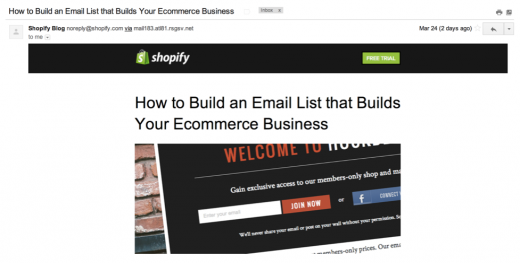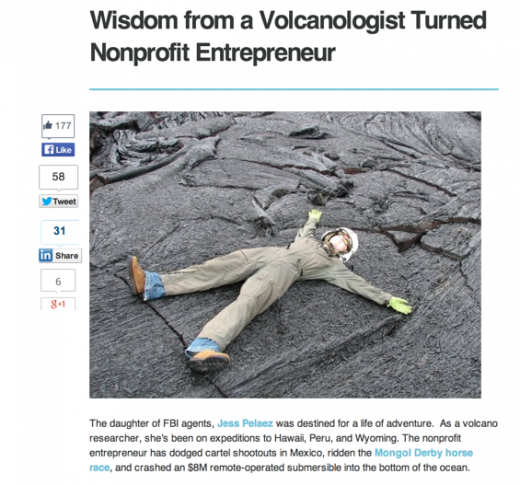
Marketers are making significant investments in content marketing, and rightfully so. According to Rishi Dave, chief marketing officer at Dun & Bradstreet, today’s consumers are entirely self-directed in their buying journeys. Content helps empower these audiences to make educated and informed decisions.
The challenge with content marketing, however, is exactly what makes it awesome. The competition for eyeballs is fierce. Not to mention, human attention spans are getting shorter.
According to one Web use study, the average attention span in 2012 was eight seconds. Even goldfish are easier to engage. Their attention spans? Nine seconds.
Content marketing programs need more than blog posts, infographics, and videos to take off. Your team needs a carefully defined distribution strategy — which is, in many ways, more like business development and less like marketing.
Build your strategy by following the road less traveled. Focus on these five distribution channels that frequently go ignored:
1. Sales and account management teams
Client managers and deal-closers are the crucial link between your company and the outside world. These team members are constantly in the field, solving your customers’ most crucial problems.
Sales reps and account managers spend the bulk of their days building relationships and fielding inbound questions. Content can help by providing the ultimate conversation starter.
Marketers can work with their companies’ sales masterminds to 1) pinpoint content ideas from incoming questions and 2) distribute material.
Build content into ongoing conversations — this process facilitates relationship-building at scale.
2. Email
Company blogs are everywhere. It’s unlikely that your audience will be checking your blog each day for updates — as much as they might love your content, they don’t have the time.
Email is an invaluable channel for reaching — and engaging these audiences 1:1. When you publish a blog post, send your audience a short and sweet notification. You can monitor peaks in unsubscribe rates to avoid spamming people.
There is no need to worry about visuals or an over-the-top newsletter. Just prioritize the basics in the form of 1) your great content and 2) a link back to the entire article on your block. Here are some examples to inspire you:
Neil Patel deploys a short and sweet teaser of his blog content to send traffic to his marketing blog, Quick Sprout:
Coworks, a marketplace for curated creative talent, sends a short email when blog posts are published:
Shopify, a platform that powers e-commerce stores, adds images to its email marketing for additional visual appeal:
3. Content syndication
Is your blog audience relatively small? As a new content marketer, you may feel overwhelmed by the challenge of building a reader-base from the ground up.
One solution is to amplify the reach of your content by syndicating it with other blogs or media channels. Here are the steps that you need to take:
Step 1: Build relationships with relevant blogs, brands, or publishers
Step 2: Pitch content regularly
Step 3: Return the favor – exchange value for value
It’s important not to syndicate just for the sake of getting your post out there, but target it to the audience that will benefit most from your content.
4. Good old fashioned networks
Don’t have a social media following? Don’t worry about it. It’s likely that you’re involved with organizations — alumni groups, business associations, or networking events — that are distribution hubs.
Reach out to these connections and ask them to support your content via social media. Make sure to emphasize why this content would be valuable or inspirational to the group’s audience.
As an example, check out this blog post about Jess Pelaez, a volcanologist who is launching a nonprofit called Blueprint Earth. To promote this blog post — and generate hundreds of shares — she asked her organization’s sponsors, board members, and stakeholders to promote the story.
5. LinkedIn influencers
LinkedIn recently released its influencer program to the public, with access rolling out to users in private beta. Soon enough, it will be possible for any LinkedIn member to self-publish, syndicate, and distribute content on the platform.
Here is an example from Sunny Bonnell, co-founder and creative director at design and branding firm Motto:
What’s important to keep in mind about LinkedIn is that the platform is people-centric. This is one channel in which it’s important to post as an individual, rather than a representative of a brand. The key to succeeding on LinkedIn is to add value — write from the heart.
Final thoughts: Focus on the ecosystem
Content can help you forge bonds, inspire engagement, and amplify relationships to new levels of scale. Look for natural touchpoints to include your content and join the conversation and always strive to test new ideas and techniques for driving distribution. There is no reason to stick to best practices or an established standard (because there are none).
Content marketing is fluid and organic. Growth arises where structure meets spontaneity.
Get the TNW newsletter
Get the most important tech news in your inbox each week.










